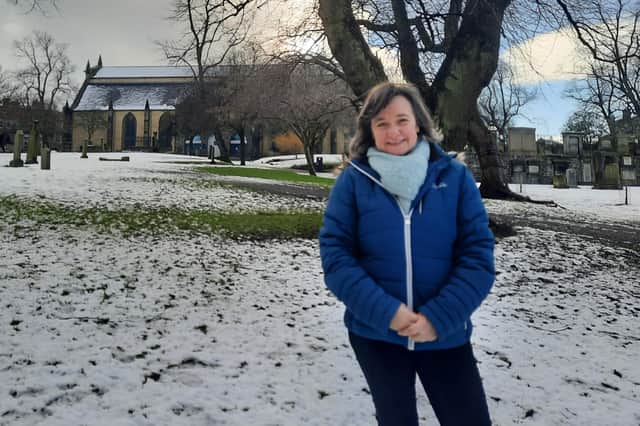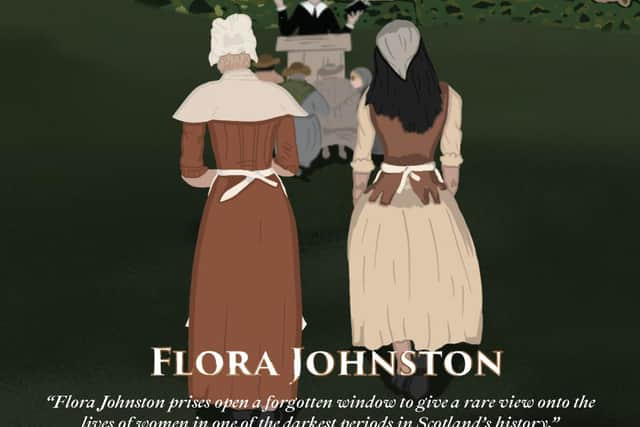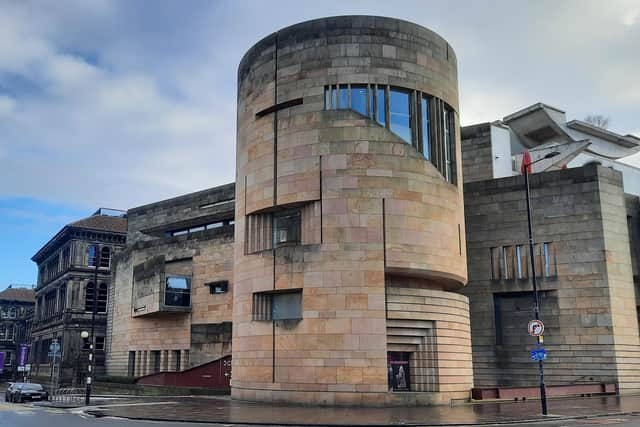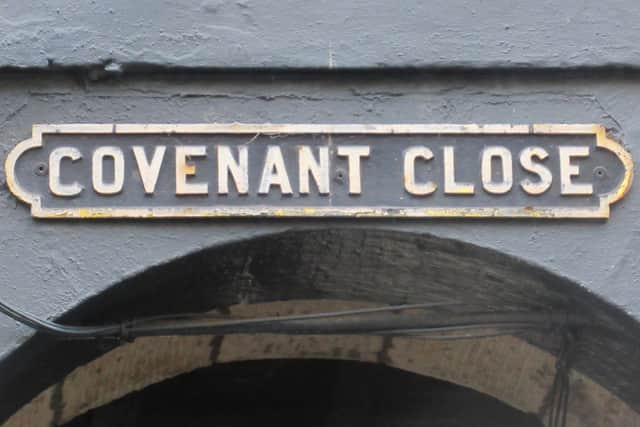National Museum sackcloth gown sparked Edinburgh novel 20 years in the writing


Two decades on, Johnston has drawn on that research for her debut novel, What You Call Free, which tells the story of two remarkable women who lived during the period of the Covenanters. Loosely based on real historical figures, the novel uniquely charts the troubled times of the 1600’s from a female perspective.
Johnston, who has an impressive track record as a writer and researcher of all things Scottish, recalls that it was while working on the opening of the then new Museum of Scotland that a long-forgotten item initiated her 20 year journey.
Advertisement
Hide AdAdvertisement
Hide Ad"It started when I was lucky enough to come out of university at a time when the National Museums of Scotland were working on the display for what was the new Museum of Scotland. I was involved in creating those exhibitions, a fantastic experience, and it was then that I came across the sackcloth gown, which was the start of the story really."


She explains, "I was a fairly junior researcher at the time, at the time the Scottish objects were kept in Queen Street where there was only a small display area. Creating the new building meant that a lot of things that had been in storage were now going to be displayed as well.
"The sackcloth gown was something that, as far as I know, hadn't been on display before. It was just a one-line entry in the catalogue saying that it had been ‘used in West Calder parish for ecclesiastical discipline’ so, basically, I was sent off to the archives to see if I could find out anything about it. I looked up the Kirk Session records for West Calder and found examples of it being used and this particular story of a girl called Jonet Gothskirk."
The wearing of sackcloth was a punishment inflicted on persons guilty of adultery, who would be paraded in sackcloth before the congregation of their kirk before sitting on a ‘repentance-stool’ to be publicly rebuked, Sunday after Sunday. What Johnston discovered during her research horrified her.
Advertisement
Hide AdAdvertisement
Hide Ad"I knew about this kind of punishment but I thought it was just for a week or two. I was horrified when I read through the records and realised it went on for months. That planted the idea in my head. I wondered what that would have been like."


Consequently, What You Call Free takes the reader an ‘emotional and raw’ journey through the vibrant Pentland hills to the grimy closes of the Capital, giving a rare glimpse into the lives of these two uncompromising women in what has been described as 'a seductive sequence of true historical events and nail-biting suspense'.
Set during the oppressive reign of James VII, the novel follows the stories of widowed Helen Alexander and 18-year-old Jonet in their harrowing search for political and religious freedom. Forced to shamefully wear sackcloth every Sabbath to pay for her sins, Jonet suffers deep humiliation at the hands of her kirk. With an uncertain future and a baby on the way, Jonet seeks guidance and acceptance within a group of religious outlaws where she discovers liberating humanity, devoted friendships and higher religious freedom.
She finds comfort and strength in her friendship with the fiercely loyal and compassionate Helen who provides refuge to religious fugitives, including the outlawed preacher James Renwick. Together, the women fight for their individual freedom and the freedom of Scotland, facing dangers and terror which continuously fail to falter their strength and solidarity.
Advertisement
Hide AdAdvertisement
Hide Ad"Jonet and Helen's stories intertwine," explains Johnston. "Jonet's is largely made up, based on the records of her appearing in sackcloth, but Helen's is different because she left a memoir of her life. It really is quite unusual to have a woman's own words from the 17th century, so when I read Helen's diary, that was quite intriguing. So the whole Helen Alexander, James Renwick, covenanters thread comprises real events which have been given my interpretation of how it would be.


Bringing the two stories together came with a degree of responsibility to honour the women's memories.
"A great deal of responsibility," the writer agrees, "With Helen I tried to remain true to what she wrote, filling in the gaps with thoughts and feelings, Jonet's, because we know nothing else about her, is a story I made up. I thought about changing her name but I wanted to use the name of the woman who inspired the book because she went through all this and we have her name in the museum for everyone to see. I wanted to honour that."
The 48-year-old author, who now works in a part-time administrative position at her local church, Davidson's Mains parish church, gave up her career as a freelance curator two years ago to concentrate on writing fiction having already had a number of non-fiction titles published. Those previous books include War Classics, published by the History Press, in which she recorded war memoirs of one of her great aunt, and Faith In A Crisis, about the clearances in North and South Uist. Penning fiction was a very different experience she reflects. "There's a lot more freedom with fiction to go where you want to go and I enjoy that extra step of thinking what it was like for these people, which history can't quite tell us. What did they think? How did they feel and imagine?”
Advertisement
Hide AdAdvertisement
Hide AdAnd you can take that extra step too when the Museum of Scotland reopens, she reveals, by getting up close and personal with Jonet’s sackcloth gown.
“It is there and if the museum was open just now, you'd be able to visit it.”
Tomorrow: Read the first of four extracts from What You Call Free only in the Edinburgh Evening News
A message from the Editor:
Thank you for reading this article. We're more reliant on your support than ever as the shift in consumer habits brought about by coronavirus impacts our advertisers.
If you haven't already, please consider supporting our trusted, fact-checked journalism by taking out a digital subscription
Comment Guidelines
National World encourages reader discussion on our stories. User feedback, insights and back-and-forth exchanges add a rich layer of context to reporting. Please review our Community Guidelines before commenting.